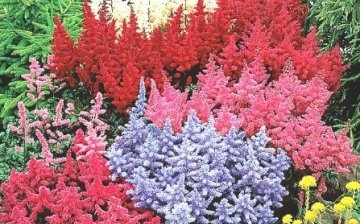Planting and caring for astilba - a beautiful ornamental plant
Relatively recently, astilba was not particularly popular with flower growers, so few people were interested in planting and caring for astilba.
However, all its positive aspects have not yet been appreciated. Meanwhile, astilbe is incredibly decorative, extremely unpretentious and livable.
Planting and caring for astilba
Astilba grows well on any type of soil and the only thing that it really needs is timely watering. However, with the possibility of choice, slightly acidic loose soil, into which organic fertilizers have been introduced, is ideal. It is better to use peat as mulch.
Astilba can be planted in open areas and in the shade; not all varieties like sunny places. However, heavy shading has a negative effect on flowering. Areas with high groundwater levels are ideal to provide sufficient moisture for plants.
It is advisable to cut off the withered inflorescences of astilba immediately. The flexible and resilient stems of Astilba are not afraid of the gusty wind, making the flowers, heavy from the rain, bend elegantly without the risk of damage.
Old plants can not be covered for the winter, it is advisable to cover young ones, otherwise, in case of little snow, they may freeze slightly. Astilba has established itself as a decent winter hardiness, besides, the plants are practically not damaged by pests.
In favorable conditions, astilbe grows without transplanting up to 15 years, which, of course, somewhat reduces decorativeness. This is one of the reasons for the regular transplant of astilba, which is carried out every 3-5 years, dividing the bush with a sharp shovel into several parts with developed buds. Renewed plantings are well watered for several days. Astilba is planted and transplanted almost at any time.



